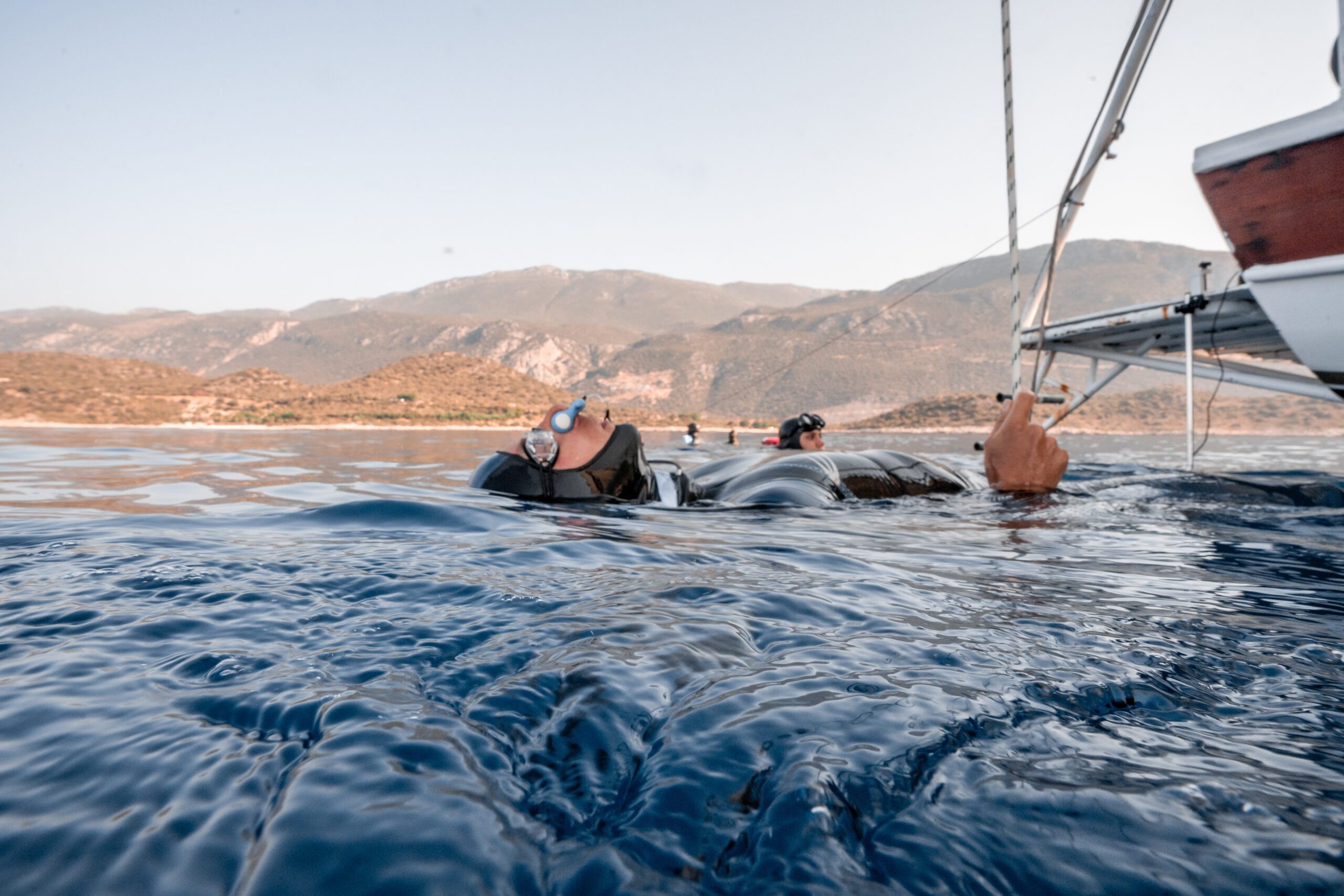Freediving
Imagine… mind and body relaxed you let yourself go and slip into the water. Just like the dolphins and the whales you become a part of the magnificent harmony of nature.
Freediving apnea is simply holding your breath and diving down to discover your freedom.
Freediving is a type of underwater diving that relies on the diver’s ability to hold their breath for extended periods of time. It involves diving into deep water without the use of any breathing equipment such as scuba gear, relying solely on the diver’s own lung capacity and natural swimming abilities.
Freediving is typically divided into two main categories: recreational and competitive freediving. Recreational freediving is done for leisure and personal exploration, while competitive freediving involves a series of disciplines and competitions with strict rules and regulations.
Freediving can be a challenging and rewarding activity, but it requires proper training and safety precautions to be done safely. It is important for individuals to have a good understanding of the physical and physiological aspects of freediving, as well as to take the necessary precautions to prevent accidents and injuries.
To really understand freediving we need to look back through human history, to humanity’s connection with nature and to the genetic specializations within the human body which have evolved to equip us to do it.
People have been exploring the underwater world for as much as 16,000 years. Historically freediving was a hunting technique on which many peoples livelihood and wellbeing depended. These day freediving is still often associated with spearfishing, but in fact for the last 70 years its history it has become a sport in which people aim to realize themselves and their potentials…
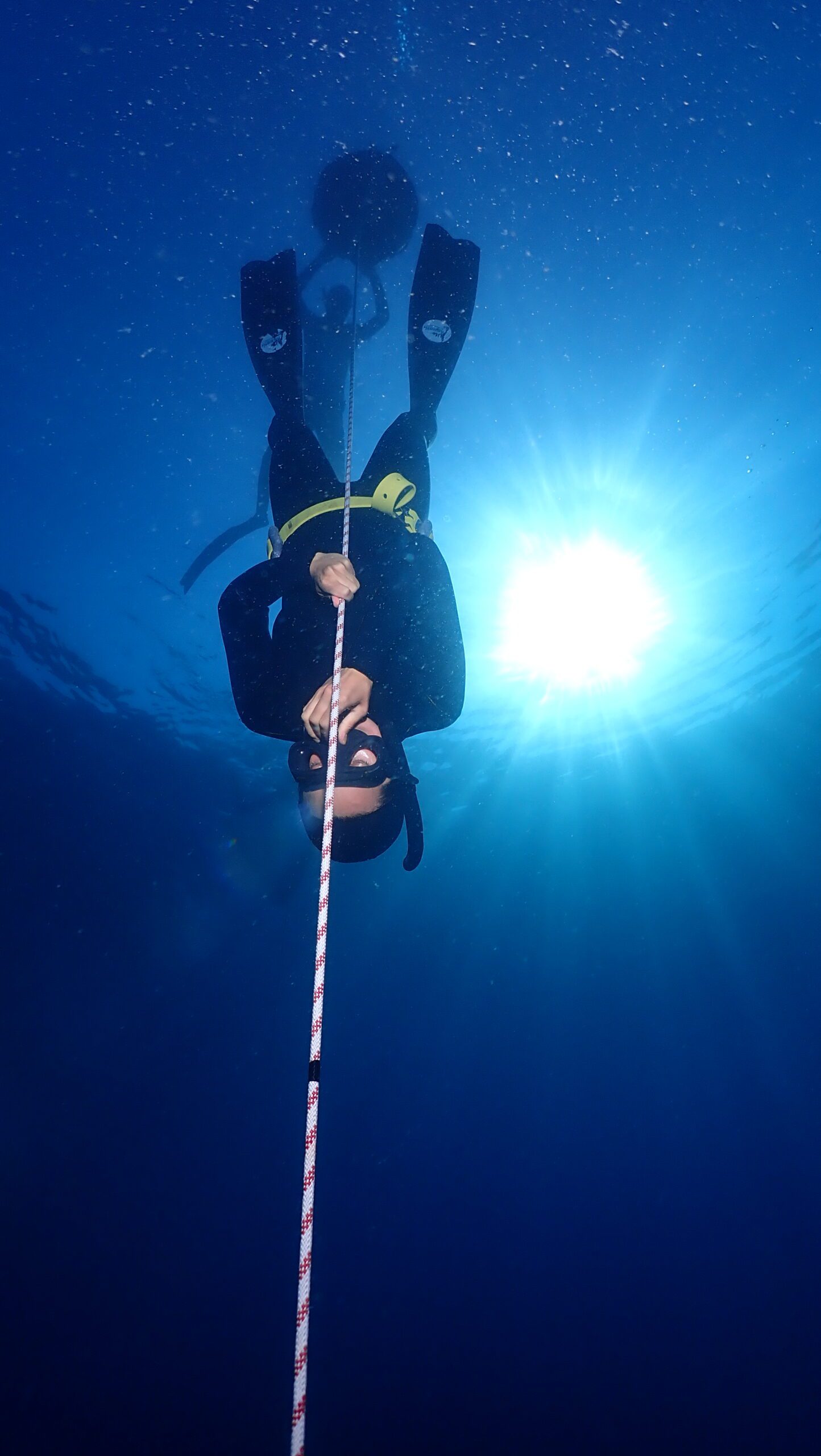
Freediving
Adventure waiting you
So Why Freediving?
There are several reasons why you might consider learning freediving:Freediving
New Generation
Freediving and Human Anatomy
The human body is an incredible system, highly refined at self balancing and harmonizing with its environment. Its intrinsic connection with water is demonstrated by its evolved responses. If a newborn baby’s head is submerged its first instinct is to hold its breath. Is it just a survival reflex or evidence of humankind’s deeper relationship with water? It wasn’t until the 1960s that scientists stopped to ask this question. They found the answer in the discovery that humans poses the Mammalian Dive Reflex. MDR
Simply put, MDR describes the effects triggered by immersing your face in water and by the body’s sensing of the increased pressure at depth. These changes are the basis of the human ability to dive deeper for longer and the theory behind freediving is based on your MDR. You can learn more about MDR in the Freediver (Level 1 )and Advaced freediver (Level 2)courses
Freediving involves the human body’s physiological responses to the underwater environment. Understanding human anatomy is important in freediving as it can affect the diver’s ability to withstand the pressure and lack of oxygen that comes with being underwater for an extended period of time.
Some key anatomical factors to consider in freediving include:
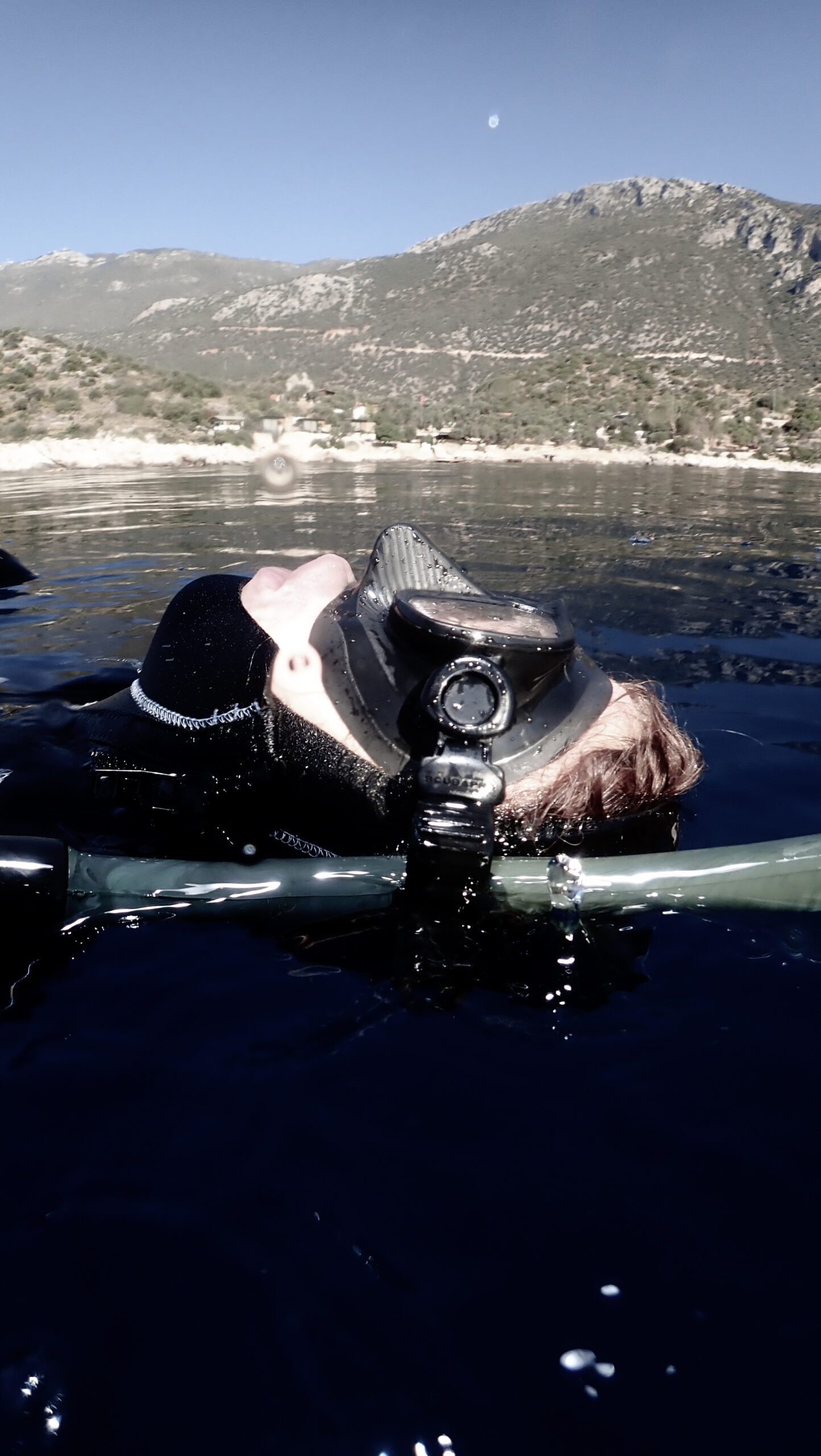

Overall, understanding human anatomy is crucial in freediving, as it can help divers prevent injury and increase their ability to dive safely and comfortably. It is important for individuals to receive proper training and guidance from qualified instructors to learn these techniques and minimize the risks associated with freediving.
Freediving
New Generation
Competitive Freediving Categories
Static Apnea
Static apnea is a discipline of freediving that involves holding your breath for as long as possible while remaining motionless on the surface of the water, typically in a pool. It is also known as “breath-hold diving” or “static breath-hold.”
In static apnea, the diver lies face down in the water, holding their breath and remaining still for as long as they can. The diver’s goal is to hold their breath for the maximum amount of time possible, while staying relaxed and conserving energy.
Static apnea is a test of both physical and mental endurance, as it requires the diver to overcome the urge to breathe and remain calm and focused under pressure. Training for static apnea typically involves techniques to improve lung capacity, breath control, and relaxation.
Competitive static apnea involves strict rules and regulations, including the use of a safety team to monitor the diver and ensure their safety. The world record for static apnea is currently over 11 minutes, but it is important to note that holding your breath for extended periods of time can be dangerous and should only be attempted under the guidance of a qualified instructor.
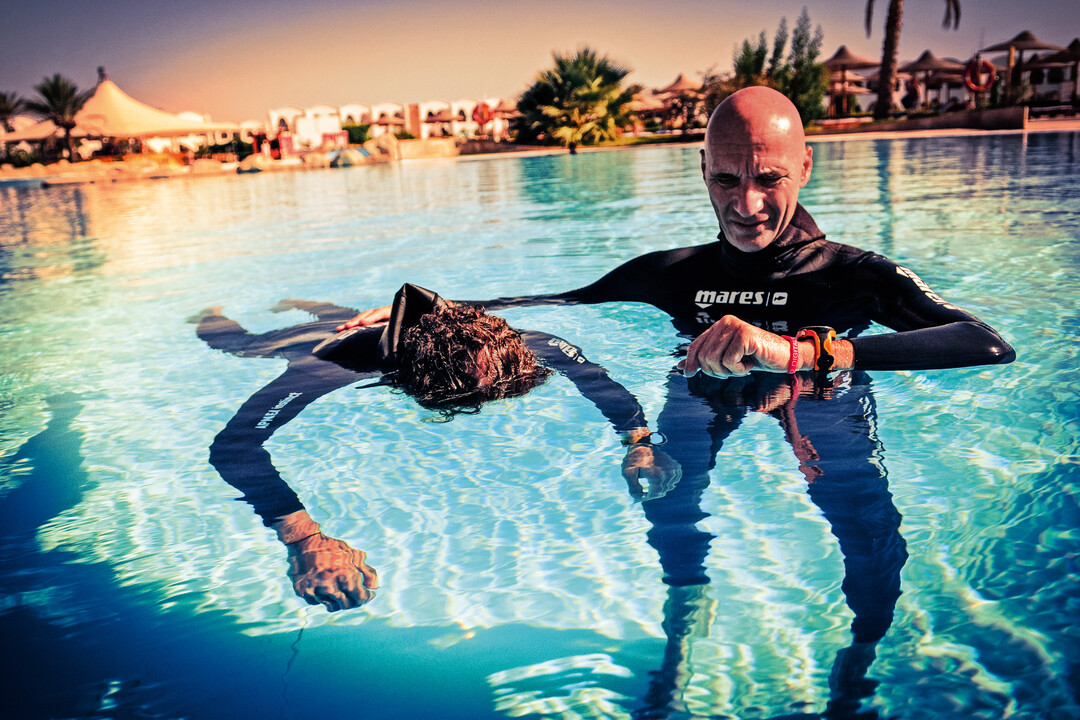

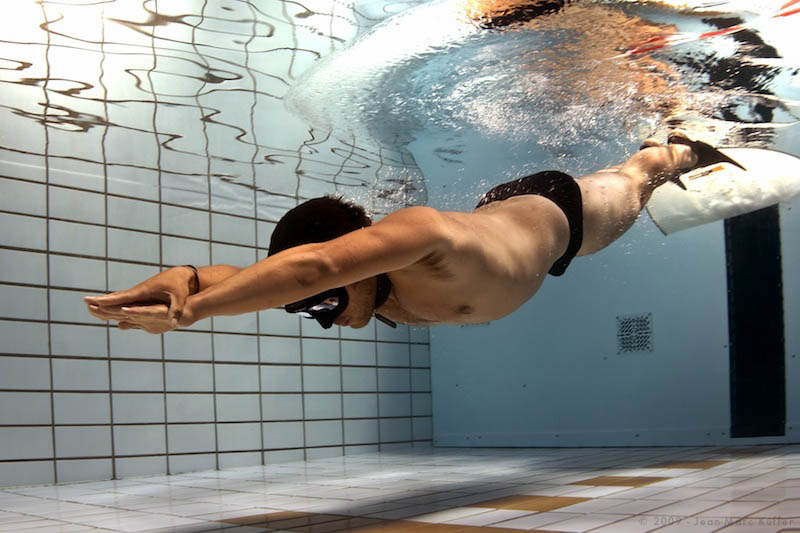

Dynamic Apnea
Dynamic apnea is a type of freediving discipline that involves swimming horizontally underwater for as far as possible on a single breath. It is also known as “dynamic apnea swimming” or “dynamic freediving.”
In dynamic apnea, the diver uses fins to swim as far as possible underwater while holding their breath. The distance swum is measured by the use of a line, typically in a pool or other confined area. The goal is to swim as far as possible while conserving energy and oxygen.
Dynamic apnea requires a combination of physical strength, lung capacity, and technique. It is a challenging discipline that can be trained and improved over time. Proper training and safety precautions are important to avoid the risks associated with freediving, including hypoxia and blackouts.
Competitive dynamic apnea involves strict rules and regulations, including the use of safety teams to monitor the diver and ensure their safety. The world record for dynamic apnea is currently over 300 meters for men and 236 meters for women. However, it is important to note that dynamic apnea can be dangerous and should only be attempted under the guidance of a qualified instructor.
Constant Weight Freediving
Constant weight (CWT) is a freediving discipline which the freediver descends and ascends using his fins/monofin and/or with the use of his arms without pulling on the rope or changing his ballast; only a single hold of the rope to stop the descent and start the ascent is allowed. Constant weight is the common sportive depth discipline of freediving, because of the specific fins or monofins used in it. Constant weight is one of the three disciplines considered for international competition, with static apnea and dynamic with fins.
Constant weight apnea is a discipline of freediving that involves swimming as deep as possible on a single breath while using fins to assist the dive. It is also known as “constant weight diving.”
In constant weight apnea, the diver descends vertically into the water while holding their breath and using fins to assist the dive. The goal is to reach the greatest depth possible while conserving energy and oxygen. The diver must then return to the surface using the same technique, without any assistance from a dive line or other equipment.
Constant weight apnea requires a combination of physical strength, lung capacity, and technique. Proper training and safety precautions are important to avoid the risks associated with freediving, including hypoxia and blackouts.
Competitive constant weight apnea involves strict rules and regulations, including the use of safety teams to monitor the diver and ensure their safety. The world record for constant weight apnea is currently over 130 meters for men and 122 meters for women. However, it is important to note that constant weight apnea can be dangerous and should only be attempted under the guidance of a qualified instructor.
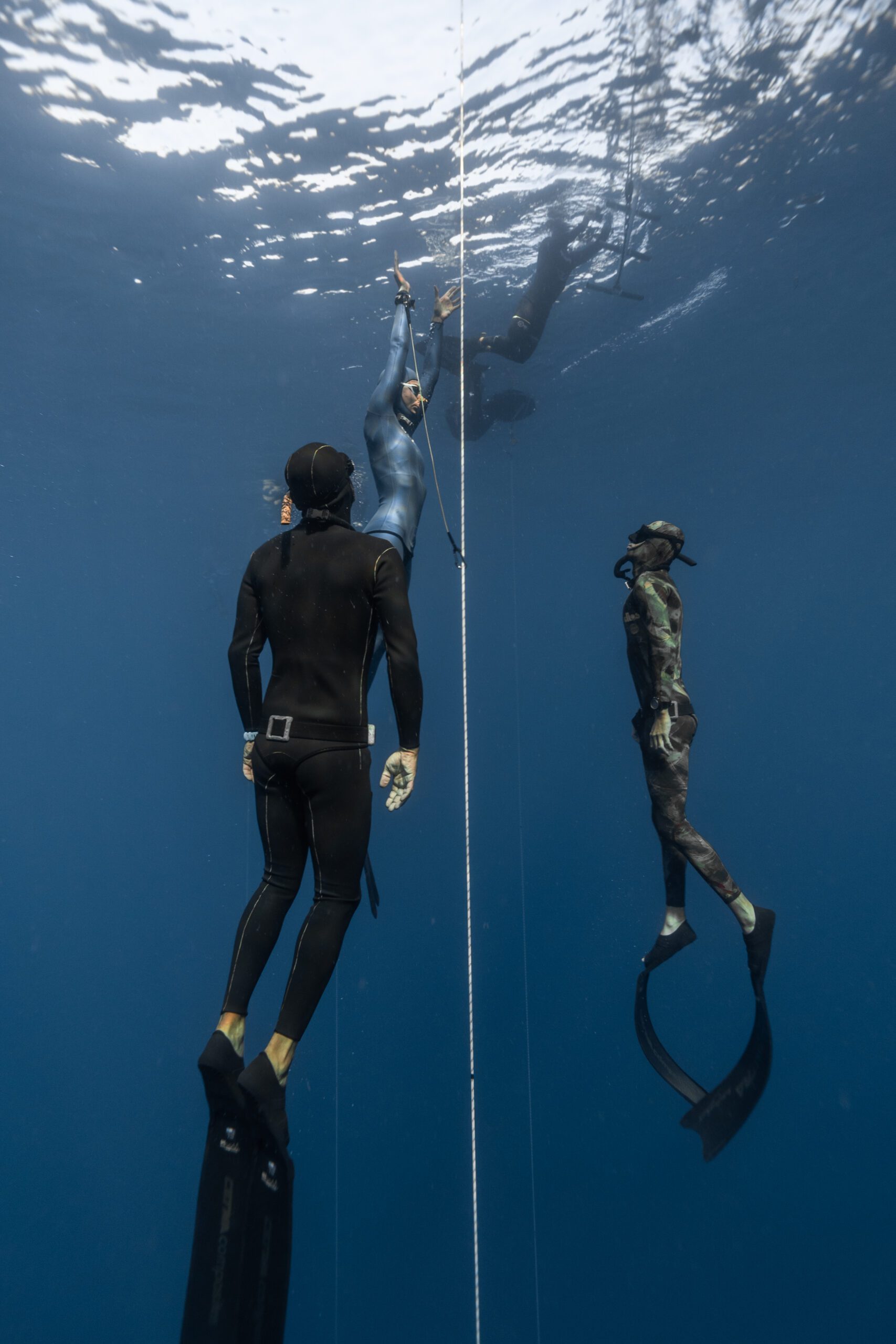



Constant weight freediving without fins
Constant weight apnea without fins (CNF) is a challenging discipline of freediving that involves swimming as deep as possible on a single breath without the use of fins or any other type of propulsion equipment. It is also known as “pure apnea.”
In CNF, the diver descends vertically into the water while holding their breath and using only their own body strength to swim downward and back to the surface. The goal is to reach the greatest depth possible while conserving energy and oxygen.
CNF requires exceptional physical fitness, lung capacity, and technique. It is considered one of the most difficult forms of freediving due to the lack of propulsion equipment and the increased energy expenditure required to swim to depth and return to the surface.
Competitive CNF involves strict rules and regulations, including the use of safety teams to monitor the diver and ensure their safety. The world record for CNF is currently over 100 meters for men and 72 meters for women. However, it is important to note that CNF can be dangerous and should only be attempted under the guidance of a qualified instructor.
Free immersion apnea
Free immersion apnea is a discipline in which the freedivers uses the vertical guiderope to pull him or herself down to depth and back to the surface. It is known for its ease compared with the Constant Weight disciplines, while the athlete is still not allowed to release weights.
In free immersion apnea, the diver uses their own strength to pull themselves down a dive line while holding their breath. The diver then returns to the surface using the same line. The goal is to reach the greatest depth possible while conserving energy and oxygen.
Free immersion apnea requires a combination of physical strength, lung capacity, and technique. Proper training and safety precautions are important to avoid the risks associated with freediving, including hypoxia and blackouts.
Competitive free immersion apnea involves strict rules and regulations, including the use of safety teams to monitor the diver and ensure their safety. The world record for free immersion apnea is currently over 124 meters for men and 85 meters for women. However, it is important to note that free immersion apnea can be dangerous and should only be attempted under the guidance of a qualified instructor.
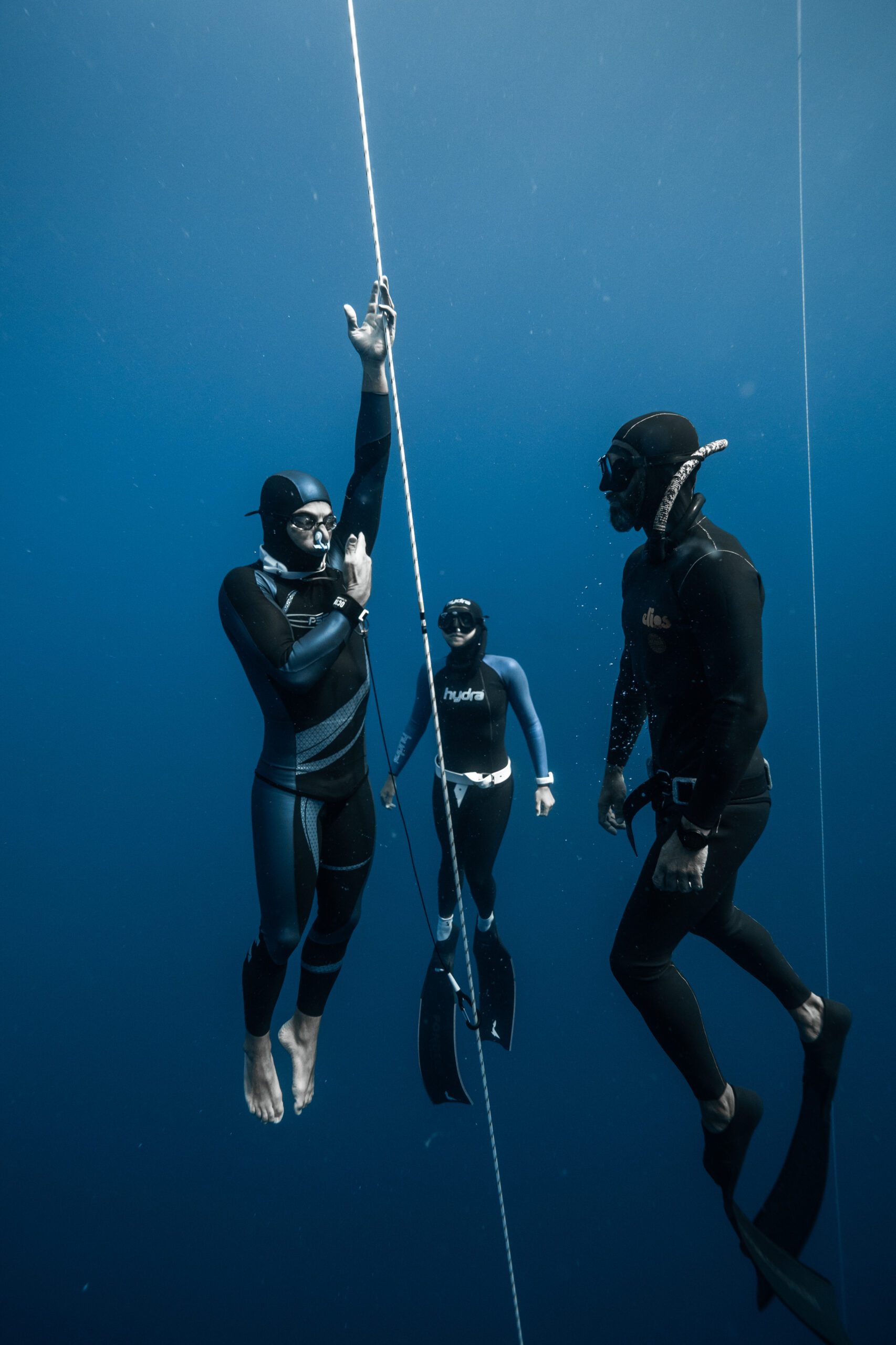

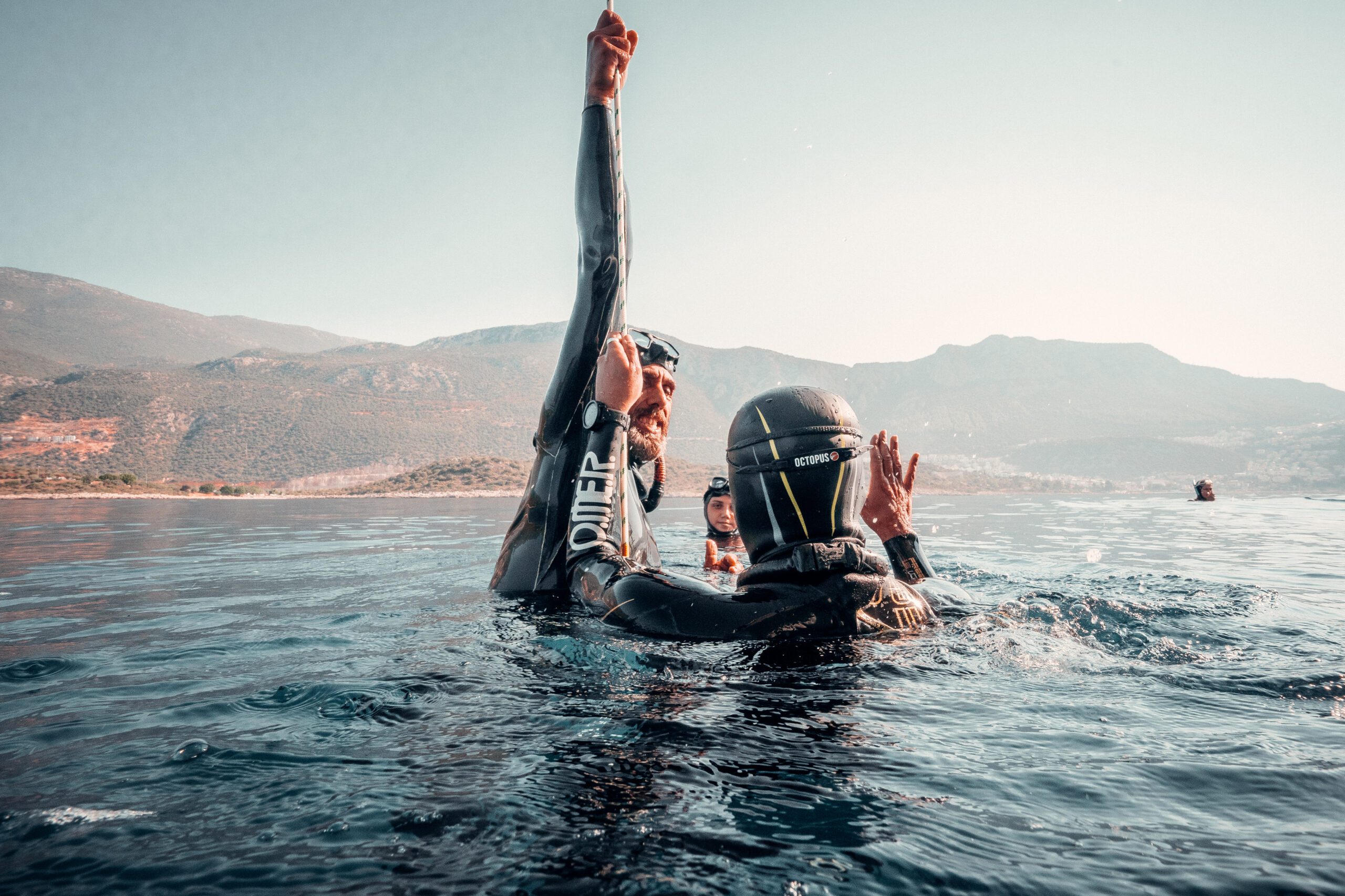

Variable weight freediving
Variable weight apnea is a discipline of freediving that involves using a weighted sled to descend into the water while holding one’s breath, and then returning to the surface using the sled to assist the ascent. It is also known as “variable weight diving.”
In variable weight apnea, the diver descends into the water while holding their breath and using a weighted sled to assist the dive. The diver then returns to the surface using the sled to assist the ascent. The goal is to reach the greatest depth possible while conserving energy and oxygen.
Variable weight apnea requires a combination of physical strength, lung capacity, and technique. Proper training and safety precautions are important to avoid the risks associated with freediving, including hypoxia and blackouts.
Competitive variable weight apnea involves strict rules and regulations, including the use of safety teams to monitor the diver and ensure their safety. The world record for variable weight apnea is currently over 146 meters for men and 130 meters for women. However, it is important to note that variable weight apnea can be dangerous and should only be attempted under the guidance of a qualified instructor.
No-Limits Freediving
No-limits apnea is a discipline of freediving that involves descending into the water while holding one’s breath using a weighted sled or other equipment, and then returning to the surface using a separate lift bag or other means of buoyancy. It is considered the most dangerous and extreme form of freediving.
In no-limits apnea, the diver descends into the water while holding their breath and using a weighted sled or other equipment to assist the dive. The diver then returns to the surface using a separate lift bag or other means of buoyancy. The goal is to reach the greatest depth possible while conserving energy and oxygen.
No-limits apnea requires a combination of physical strength, lung capacity, and technique. Proper training and safety precautions are essential to avoid the high risks associated with this form of freediving, including decompression sickness, hypoxia, and blackouts.
Competitive no-limits apnea involves strict rules and regulations, including the use of safety teams to monitor the diver and ensure their safety. The world record for no-limits apnea is currently over 214 meters for men and 160 meters for women. However, it is important to note that no-limits apnea is an extremely dangerous activity and should only be attempted by highly trained and experienced individuals under the guidance of a qualified instructor.
